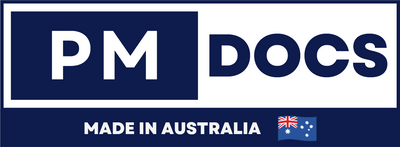Cybersecurity Risk Assessment Using NIST CSF 2.0: Australia Focus
Introduction
In today's digital age, cybersecurity is more important than ever. With cyber threats evolving rapidly, businesses need a robust framework to protect their assets. The increasing sophistication of cyber threats, ranging from malware and ransomware to phishing attacks, demands a proactive approach to cybersecurity. The National Institute of Standards and Technology (NIST) has developed the Cybersecurity Framework (CSF) 2.0 to help organizations manage and reduce cybersecurity risks. This framework not only provides a structured methodology but also encourages organizations to build resilience against threats. This article will guide you through using the NIST CSF 2.0 with a focus on the AU (Australia) context, to enhance your cybersecurity risk assessment and management efforts. Understanding local nuances and regulatory requirements is crucial for implementing an effective cybersecurity strategy, and this guide aims to provide insights into tailoring the NIST CSF 2.0 for Australian organizations.

Understanding NIST Cybersecurity Framework (CSF) 2.0
The NIST Cybersecurity Framework is a set of guidelines designed to reduce and manage cybersecurity risks. It is structured around five key functions: Identify, Protect, Detect, Respond, and Recover. These functions are aimed at helping organizations to better understand, manage, and reduce their cybersecurity risks. The framework's comprehensive approach allows organizations to assess their current cybersecurity posture and develop strategies to improve it. By aligning with these functions, organizations can create a robust defense mechanism that not only guards against current threats but is also adaptable to future challenges.
Key Components Of NIST CSF 2.0
-
Identify: This function helps organizations develop an understanding of their environment. It involves identifying assets, data, and capabilities that are crucial to business operations. By cataloging these elements, organizations can prioritize their cybersecurity efforts and allocate resources efficiently. Understanding the importance of each asset within the business context ensures that protection measures are adequately focused.
-
Protect: This function outlines safeguards necessary to ensure critical infrastructure services are delivered. It includes access control, data security, and protective technology. Implementing these safeguards helps to mitigate the impact of potential cybersecurity events. By establishing solid protective measures, organizations can defend against unauthorized access and data breaches, maintaining the integrity and confidentiality of critical information.
-
Detect: This function defines the activities that identify the occurrence of a cybersecurity event. It involves continuous monitoring and detection processes. Effective detection mechanisms allow organizations to identify threats in real-time, minimizing potential damage. By employing advanced detection technologies, organizations can quickly respond to incidents, reducing their impact on operations.
-
Respond: This function includes the activities to take action regarding a detected cybersecurity event. It focuses on response planning and communications. A well-prepared response strategy ensures that all stakeholders are aware of their roles, enabling a coordinated effort to address incidents. By developing comprehensive response plans, organizations can minimize recovery time and maintain business continuity.
-
Recover: This function supports timely recovery to normal operations to reduce the impact of a cybersecurity event. It emphasizes resilience and the ability to restore services quickly. Recovery plans help organizations resume operations with minimal disruption, protecting their reputation and customer trust. By learning from incidents, organizations can improve their defenses and prevent future occurrences.
The AU Focus
The NIST CSF 2.0 integrates international standards, allowing for broader applicability. The AU focus refers to tailoring the NIST framework to meet the specific cybersecurity needs of Australian organizations, considering local regulations and threats. This involves understanding the unique threat landscape faced by Australian businesses and adapting the framework accordingly. By aligning with local laws and industry standards, organizations can ensure compliance and enhance their cybersecurity posture.
Conducting A Cybersecurity Risk Assessment With NIST CSF 2.0
Step 1: Establish Context
Before diving into the risk assessment process, it's crucial to establish the context. Determine the scope of the assessment by identifying the systems, processes, and data to be assessed. Consider regulatory requirements and business objectives specific to Australia. Understanding the organizational context helps in aligning cybersecurity efforts with strategic goals and regulatory mandates. By defining the scope, organizations can focus their resources on the most critical areas, ensuring a targeted approach to risk management.
Step 2: Identify Potential Threats
Identify potential cybersecurity threats that could impact your organization. This includes external threats like hackers and malware, as well as internal threats such as employee errors or system failures. Consider the unique threat landscape in Australia, including factors like geography, industry, and regulatory environment. Analyzing potential threats enables organizations to anticipate and prepare for possible scenarios, enhancing their defensive capabilities. By staying informed about emerging threats, businesses can adjust their strategies and remain resilient against new challenges.
Step 3: Identify Vulnerabilities
Identify vulnerabilities within your organization that could be exploited by threats. This could include outdated software, weak passwords, or insufficient security protocols. Use NIST CSF 2.0's Identify function to categorize and prioritize these vulnerabilities. Regularly updating and patching systems, as well as strengthening access controls, can significantly reduce the risk of exploitation. By addressing vulnerabilities proactively, organizations can build a stronger security posture and reduce the likelihood of successful attacks.
Step 4: Determine Impact and Likelihood
For each identified threat and vulnerability, determine the potential impact and likelihood of occurrence. This helps in understanding the risk level and prioritizing mitigation efforts. Consider historical data and expert opinions to assess the likelihood and impact accurately. By quantifying risks, organizations can make informed decisions about resource allocation and risk acceptance. Understanding the potential consequences of a cybersecurity event aids in developing effective contingency plans and response strategies.
Step 5: Develop a Risk Management Plan
Based on the identified risks, develop a risk management plan using the NIST CSF 2.0 framework. This includes implementing protective measures, monitoring systems, and establishing response strategies. Align the plan with your organization's goals and regulatory requirements in Australia. A comprehensive risk management plan ensures that all aspects of cybersecurity are addressed, from prevention to recovery. By integrating risk management into the organizational culture, businesses can foster a proactive approach to cybersecurity.
Step 6: Implement and Monitor
Implement the risk management plan, ensuring all stakeholders are aware and trained on their roles. Continuously monitor the effectiveness of the implemented measures and adjust as necessary. Use NIST CSF 2.0's Detect and Respond functions to track and respond to any cybersecurity incidents. Ongoing monitoring and evaluation help organizations stay ahead of evolving threats and maintain a strong security posture. By fostering a culture of vigilance and continuous improvement, businesses can enhance their resilience against cyber attacks.
Step 7: Review and Update
Regularly review and update the risk assessment and management plan to address new threats and vulnerabilities. The cybersecurity landscape is dynamic, and staying updated is crucial to maintaining a robust defense posture. Continuous learning and adaptation are essential for keeping pace with technological advancements and emerging threats. By conducting regular reviews, organizations can ensure their strategies remain relevant and effective, safeguarding their assets and reputation.
Benefits Of Using NIST CSF 2.0 For Cybersecurity Risk Assessment
1. Alignment with Global Standards
The NIST CSF 2.0 aligns with international standards, making it a versatile tool for organizations operating globally. This helps in maintaining consistency across different jurisdictions, including Australia. By adhering to widely recognized standards, organizations can facilitate international collaboration and streamline compliance efforts. The framework's flexibility allows it to be adapted to various industries and regulatory environments, enhancing its applicability and effectiveness.
2. Improved Risk Management
By following a structured approach, organizations can better manage and mitigate cybersecurity risks. The framework provides a clear roadmap for identifying, protecting, detecting, responding to, and recovering from cybersecurity incidents. This structured methodology ensures that all aspects of cybersecurity are addressed, reducing the likelihood of oversight. By implementing a comprehensive risk management strategy, businesses can enhance their resilience and protect their critical assets from potential threats.
3. Enhanced Communication
NIST CSF 2.0 facilitates better communication within organizations and with external partners. It provides a common language for discussing cybersecurity risks and strategies, improving collaboration and understanding. By standardizing terminology and processes, the framework helps break down silos and fosters a collaborative approach to cybersecurity. Effective communication enables organizations to coordinate their efforts and respond more efficiently to incidents, minimizing potential damage.
4. Regulatory Compliance
Using NIST CSF 2.0 helps organizations meet regulatory requirements in Australia and other regions. It provides a structured approach to compliance, reducing the risk of fines and penalties. By aligning with regulatory standards, businesses can ensure they meet legal obligations and avoid costly breaches. The framework's adaptability to local regulations enhances its utility, allowing organizations to tailor their strategies to specific compliance needs.
Conclusion
The NIST Cybersecurity Framework 2.0 is a powerful tool for conducting cybersecurity risk assessments. By focusing on the Australian context, organizations can tailor the framework to meet local needs and regulations. Implementing a comprehensive risk management plan using the NIST CSF 2.0 ensures a robust defense against evolving cyber threats, safeguarding your organization's assets and reputation. The framework's structured approach provides a solid foundation for managing risks effectively and ensuring long-term success.




